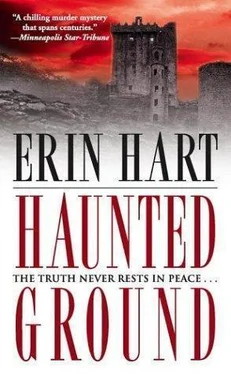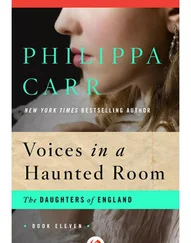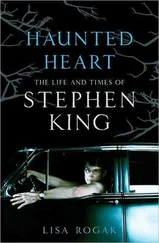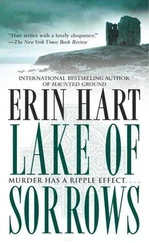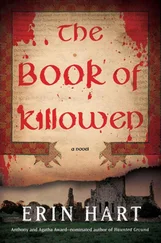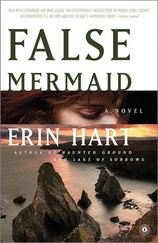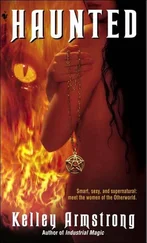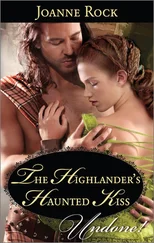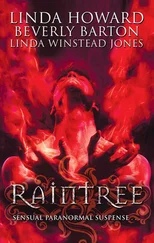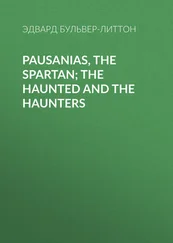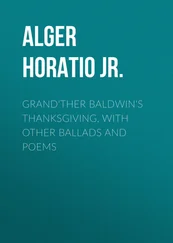“It’s all right,” he said. “Drive on. I was just thinking of the first time I saw that place.”
Hugh Osborne greeted them at the door looking red-eyed and slightly disheveled, as though he’d slept in his clothes. “Come in, come in. The place is in a bit of a state. I was up late last night digging through old papers. I’ve just made tea.” They followed him down into the kitchen, which, like the front hall, seemed different somehow from the last time they’d been here. Nora realized, taking in the sight of unwashed breakfast dishes, an open box of Weetabix on the counter, and the wrinkled linen towel slung through the handle of a drawer, that what the room lacked was the pristine tidiness of the days when Lucy Osborne had reigned at Bracklyn. The house was by no means grubby or squalid, just lived in. She wondered if Cormac perceived the change as well.
“I realize I may have sounded rather cryptic on the telephone,” Osborne said as he poured them each a mug of tea. “It’s to do with that red-haired girl from the bog. At least I think it is. But now, please, you must tell me everything you know about her. I want to feel as if I’m in full possession of the facts.”
The way he phrased it made Nora think he was preparing to make a decision. “Well, it was fairly clear from the start that the girl had been decapitated,” she said, “and closer examination told us it was probably done with a sword or an axe. So that brought up the possibility of execution.” Nora reached into her briefcase and brought out the first photographs of the cailin rua, taken at Collins Barracks, and laid them on the table. Osborne flinched slightly, but forced himself to look. It occurred to Nora that this was only the second time he’d laid eyes on the face he had searched so anxiously out on the bog. He’d been too overwrought to grasp the full horror of her image at that time; she was simply not the person he sought. But Nora could see that something had happened since then, something that led Hugh Osborne to contemplate every detail of the grim visage that stared back at him from the photo.
“At first we had no idea about a date of death,” she said. “We had just done the preliminary exam when I found this unusual image in an X ray.” She placed the X rays, the endoscopic video stills, and, finally, the color photographs of the ring on the table before him. “It turned out to be this ring, inscribed with the initials COF and AOF, and a date, 1652. That gave us a time frame and a clue about her identity, but no real information about why she might have been killed. We started to speculate about why a young girl might have been executed.”
Osborne’s expression grew more disconcerted as he studied the picture of the ring. “Go on,” he said.
“We went to see Ned Raftery, because we’d heard he knew a lot about local history. We told him about the ring, and he told us how the O’Flahertys of Drumcleggan were transplanted, and about the son, Cathal Mor, who was shipped off to Barbados.”
“But he knew nothing about any execution,” Cormac said, “so he sent us off to his aunt, Maggie Cleary.”
“And what we got from her were some fragments of a song,” Nora said, “about a man who comes home from the Indies in search of his wife, only to find out that she’s dead, executed years ago for the murder of their newborn child. Then Ned Raftery phoned to say that he’d found an account of an execution in Portumna in 1654. A young woman named Annie McCann had been convicted of killing her illegitimate child, and was beheaded for the crime.”
“And of course we were getting frustrated,” Cormac said, “because none of this was really conclusive proof, just fodder for speculation.”
“Nothing was conclusive, until we found these remains.” Nora hesitated in producing the black-and-white images of the skeletons in situ, remembering the adult’s body curled around the infant’s tiny frame.
“Please,” Osborne said. “Show me.”
Nora set the picture down, and saw a jolt of recognition in his eyes. “Malachy Drummond, the state pathologist, was able to determine that the adult skeleton from the souterrain belonged to the red-haired girl from the bog. We thought we’d found Annie McCann and her child, the one she’d supposedly killed. But I kept going back to the words of Mrs. Cleary’s song: ‘They’ve murdered thee my own true love.’ How could she be executed and murdered?”
“At that point, we thought we’d exhausted all the physical evidence,” Cormac said. “But a researcher from Trinity did some DNA typing on the remains from the souterrain—”
“His research analyzes mitochondrial DNA,” Nora explained, “which is matrilineal; it’s identical in a mother and child. But the sequences on this woman and child didn’t match, which means they weren’t related.”
“The radiocarbon results on the red-haired girl finally came back, and they confirmed the mid-seventeenth-century date, although 350 to 400 years is right on the borderline where the C-14 becomes too recent to be extremely reliable,” said Cormac. “So what we’re left with is a really confusing set of facts. The red-haired girl could very well be this Annie McCann, who may or may not have been married to someone with the initials COF. It seems clear that she was executed for murdering her child, but the infant found with her was not her own. None of it makes sense.”
“No,” said Osborne, “it makes perfect sense. Come with me.”
They followed him upstairs to the library, where the far corner looked as though it had been ransacked. A safe hidden in the bookcase was open, and boxes of papers were piled about it, what looked like very old legal documents, some still daubed with sealing wax.
“I’ve been going through the family records,” Osborne said, gathering up some papers and motioning for them to sit on the sofa in front of the fire. “You’ll understand why when you see this. There’s some stuff that goes all the way back to the O’Flahertys.” He spread a photostat of an ancient, creased sheet of paper on the table before them. The handwriting was small and cramped, and there was something of an antique flourish in the shape of the letters.
“What is it, Hugh? Where did it come from?” Nora asked.
“Remember the strongbox found in the souterrain? And the book that was found inside it? The thing sat at the National Library for months, until someone finally had time to look at it. And when they were doing a closer examination, this document evidently slipped out from the binding. Someone at the library was kind enough to send me a copy, since the book was found on the property here.”
“It looks like some sort of confession,” Cormac said.
“Read on,” Osborne said.
“From a priest. He confesses swearing a false oath in denouncing the Catholic faith. If he hadn’t, it says, his choices were being killed or being sent to Inisbofin.”
“Inisbofin?” Nora asked.
“Island off the Galway coast,” Osborne said. “Cromwell’s place of exile for priests.”
“Look here, he mentions a second false oath.” Nora began to read aloud, stumbling over photocopied patches of mildew and strange spellings:
I had been called upon to attend the lady of that house, who was suffering through the biterest pangs of childbirth, and by chance discovered whilst crossing the bog a young woman of the locality, known as Aine Mag Annaigh (known as Aine Rua on account of her red hair), herself appearing verie great with child. She entreated me to come to her aid, and told how she had made the arduous journey on foot from Iar-Connacht, the far West country, travelling always by night, for fear of English soldiers. I carryed her with me to Bracklyn house, hopeful that she might secure lodging and succor from the servants there. My Christian duty thus discharged, I attended the chamber where the mistress Sarah Osborne was being delivered of her firstborn. The lady was much weakened by the ordeall, which had gone on for fully halfe the night, and would continue on (tho we were not to know it at the time) another twelve houres hence. The lady was at last deliver’d of a boy child she named Edmund, a poor weakling who scarcely mewl’d or cryed. Alas, the child grew weaker by the houre, and at last expir’d. Nigh on to midnight, or sometime therebye, the mistress heard a lusty mewling from afar, and made as if to fly from her childbed for to seek it out. She howl’d most piteously and carry’d on in such manner until the master promised he would fetch the child. He prevaild upon me to assist him in this task, for his lady was past all reason, past all care, and truth be told, nigh unto madness with the childbed fever, and could not be dissuaded. I was sent to fetch the child of Aine Mag Annaigh when infant and mother lay in slumber. When I approached, the lady Sarah Osborne put aside her own dead child and snatchd the living from my arms, and began to give it suck and strok’t its brow. “Take that away,” says she of the dead infant, “‘Tis but a changeling. Now I’ve found my own dear babe at last.” Her husband tryed in vain to coax her from this conviction, but none would have the babe from her. “I would fain learn,” says Osborne to me, “about the wench below.” “She is unwed, sir,” says I, but I confess now it was a cruel lie. For had I not wed her, not a twelvemonth hence, to young Flaitheartaigh of Drumcleggan?
Читать дальше
